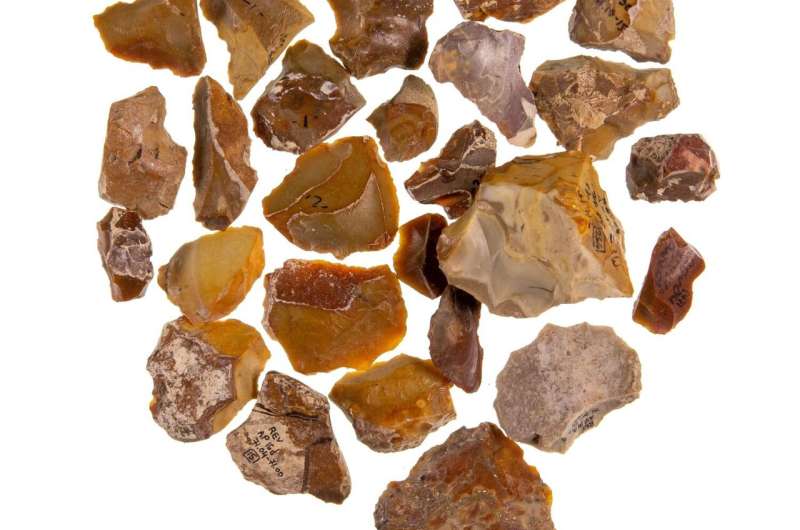
Tel Aviv University is conducting the first-of-its-kind study on what drove prehistoric humans to collect and recycle flint tools that had been made, used, and discarded by their predecessors. After examining flint tools from one layer at the 500,000-year-old prehistoric site of Revadim in the south of Israel's Coastal Plain, the researchers propose a novel explanation: prehistoric humans, just like us, were collectors by nature and culture. The study suggests that they had an emotional urge to collect old human-made artifacts, mostly as a means for preserving the memory of their ancestors and maintaining their connectedness with place and time.
The study was led by a student in the Department of Archaeology and Ancient Near Eastern Cultures at TAU. The paper was published in the journal Scientific Reports.
Stone tools with two lifecycles have been found at prehistoric sites all over the world, but the phenomenon has never been thoroughly investigated. In the current study, the researchers focused on a specific layer at Revadim, a large, open-air, multi-layer site in the south of Israel. According to the findings at Revadim, this was a popular spot in the prehistoric landscape, with early humans drawn by an abundance of wildlife, including elephants. Most of the tools found at Revadim were made of fresh flint, and the area is rich with good-quality flint.
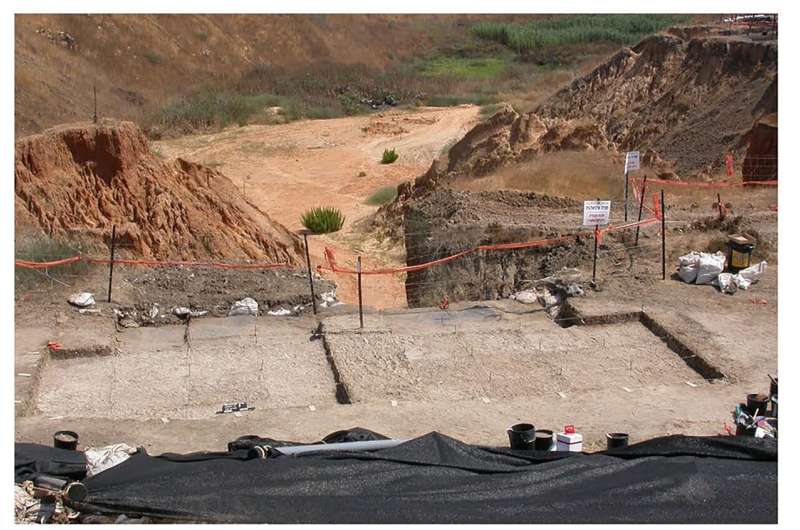
The big question is: Why did they do it? Why did prehistoric humans collect and recycle tools that had already been used by their predecessors? Good-quality flint is easy to come by at Revadim, which is not the reason for the scarcity of raw materials. The recycled tools were not unusual in form or suitable for any specific use, so the motivation was not just functional.
The key to understanding the history of recycled tools is the chemical coating which forms on flint when it is exposed to the elements for a long period of time. A discarded flint tool that lay on the ground for decades or centuries accumulated an easily identifiable layer of patina, which is different in both color and texture from the scars of a second cycle of processing that exposed the original color and texture of flint.
49 flint tools with two lifecycles were examined in the current study. After accumulating a layer of patina, these tools were collected, reworked, and used again after being abandoned. The individuals who recycled each tool shaped a new edge. The old and the new edges were examined under two kinds of microscopes and various chemical analyses in order to find use-wear marks and/or organic residues. In the case of 28 tools, use-wear marks were found on the old and/or new edges, and in 13 tools, there was evidence of contact with animal bones or fat.
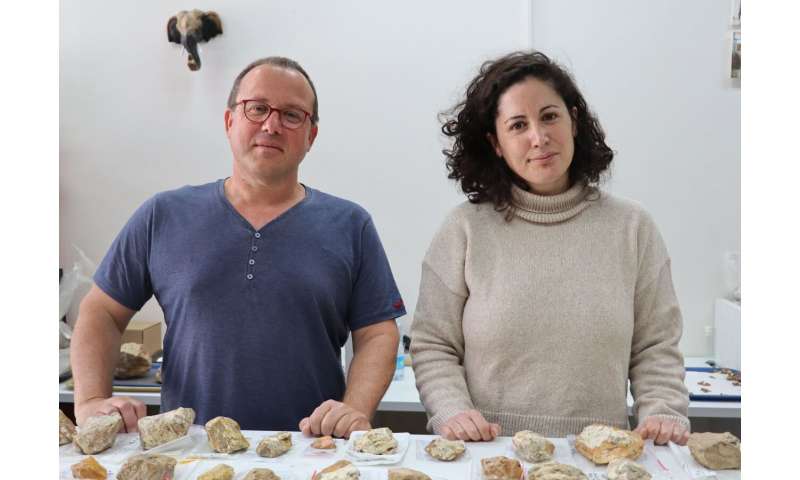
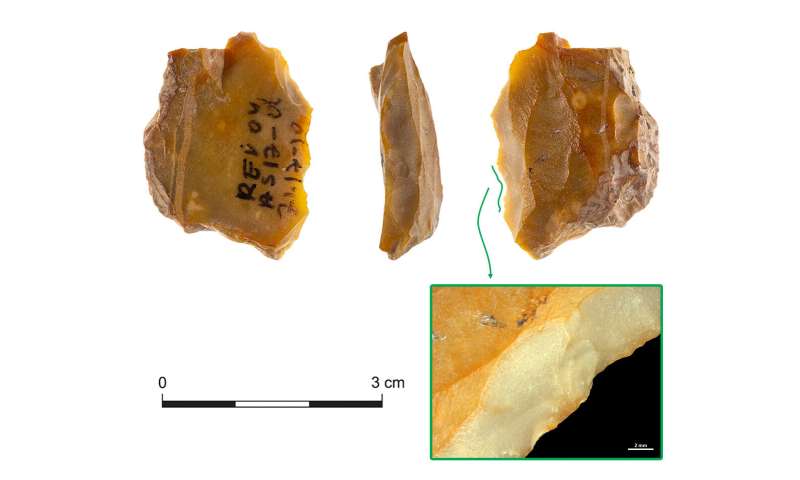
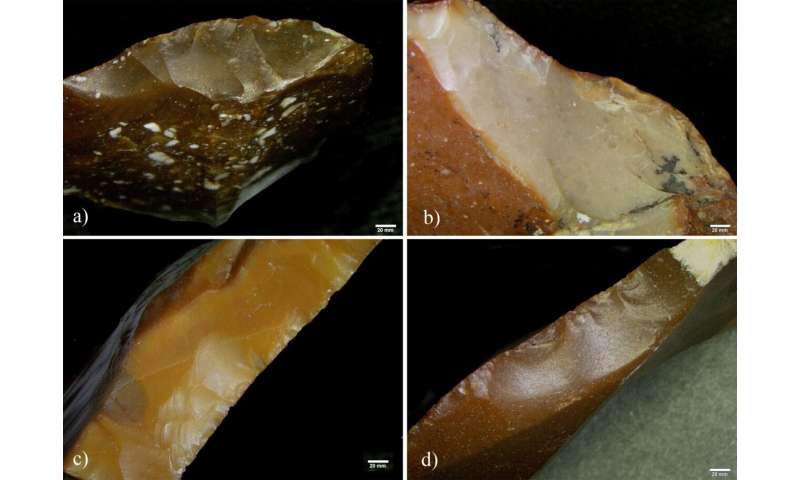





The older edges were used for cutting, while the newer edges were used for processing soft materials like leather and bone. The tools were reshaped in a very specific and minimal manner, preserving the original form of the tool, but only slightly modifying the active edge.
We propose that prehistoric humans collected and recycled old tools because they attached significance to items made by their predecessors. Imagine a prehistoric human walking through the landscape 500,000 years ago, when a stone tool catches his eye. The tool means something to him, it carries the memory of his ancestors, or it evokes a connection to a certain place. He puts it in his hands. He decided to take the artifact because he liked it and he understood that daily use can preserve and even enhance the memory, but he took care not to alter the overall shape. The prehistoric human may be likened to a young farmer still plowing his fields with his great-grandfather's rusty old tractor, but preserving the good old machine as is, because it symbolizes his family's bond with the past. The more we study early humans, the more we appreciate them. They were not different from us. The study suggests that the urge to collect is as old as humankind. Our ancestors attached great importance to old artifacts, preserving them as significant memory objects, a bond with older worlds and important places in the landscape.
More information: Bar Efrati et al, Function, life histories, and biographies of Lower Paleolithic patinated flint tools from Late Acheulian Revadim, Israel, Scientific Reports (2022). DOI: 10.1038/s41598-022-06823-2 Journal information: Scientific Reports Citation: Collectors in the prehistoric world recycled old stone tools to preserve the memory of their ancestors (2022, March 14) retrieved 14 March 2022 from https://phys.org/news/2022-03-collectors-prehistoric-world-recycled-stone.html This document is subject to copyright. Apart from any fair dealing for the purpose of private study or research, no part may be reproduced without the written permission. The content is provided for information purposes only.